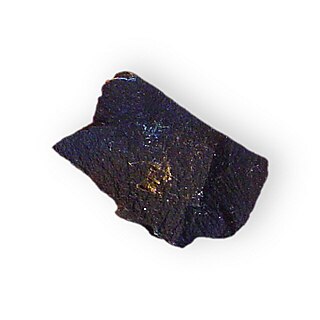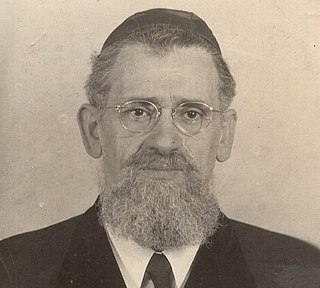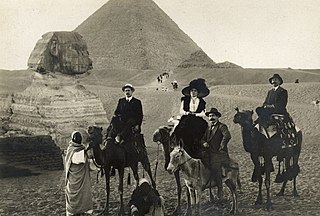
The Petroleum Trail is an international tourist trail which runs from Poland to Ukraine linking places associated with the petroleum industry of the 19th century.

The Petroleum Trail is an international tourist trail which runs from Poland to Ukraine linking places associated with the petroleum industry of the 19th century.
During the mid 19th and early 20th centuries, significant oil reserves were discovered and developed in Galicia near Drohobych and Boryslav, [1] [2] The first European attempt to drill for oil was in Bóbrka, Krosno County, Western Galicia, in 1854. [1] [2] By 1867, a well at Kleczany was drilled to about 200 meters using steam. [1] [2] On December 31, 1872, a railway line linking Borysław (now Boryslav) with the nearby city of Drohobycz (now Drohobych) was opened. American John Simon Bergheim and Canadian William Henry McGarvey came to Galicia in 1882. [3] [lower-alpha 1] In 1883, their company, MacGarvey and Bergheim, bored holes of 700 to 1,000 meters and found large oil deposits. [1] In 1885, they renamed their oil developing enterprise the Galician-Karpathian Petroleum Company (German : Galizisch-Karpathische Petroleum Aktien-Gesellschaft), headquartered in Vienna, with McGarvey as the chief administrator and Bergheim as field engineer, [lower-alpha 2] and built a huge refinery at Maryampole near Gorlice, in the southeast corner of Galicia. [3]
Considered the biggest, most efficient enterprise in Austria-Hungary, Maryampole was built in six months and employed 1,000 men. [3] [lower-alpha 3] Subsequently, investors from Britain, Belgium, and Germany established companies to develop the oil and natural gas industries in Galicia. [1] This influx of capital caused the number of petroleum enterprises to shrink from 900 to 484 by 1884, and to 285 companies manned by 3,700 workers by 1890. [1] However, the number of oil refineries increased from thirty-one in 1880 to fifty-four in 1904. [1] By 1904, there were thirty boreholes in Borysław of over 1,000 meters. [1] Production increased by 50% between 1905 and 1906 and then trebled between 1906 and 1909 because of unexpected discoveries of vast oil reserves of which many were gushers. [4] By 1909, production reached its peak at 2,076,000 tons or 4% of worldwide production. [1] [2] Often called the "Polish Baku", the oil fields of Borysław and nearby Tustanowice accounted for over 90% of the national oil output of the Austria-Hungary Empire. [1] [4] [5] From 500 residents in the 1860s, Borysław had swollen to 12,000 by 1898. [4] At the turn of the century, Galicia was ranked fourth in the world as an oil producer. [1] [lower-alpha 4] This significant increase in oil production also caused a slump in oil prices. [4] A very rapid decrease in oil production in Galicia occurred just before the Balkans conflicts.
Galicia was the Central Powers' only major domestic source of oil during the Great War. [4]

An oil well is a drillhole boring in Earth that is designed to bring petroleum oil hydrocarbons to the surface. Usually some natural gas is released as associated petroleum gas along with the oil. A well that is designed to produce only gas may be termed a gas well. Wells are created by drilling down into an oil or gas reserve that is then mounted with an extraction device such as a pumpjack which allows extraction from the reserve. Creating the wells can be an expensive process, costing at least hundreds of thousands of dollars, and costing much more when in hard to reach areas, e.g., when creating offshore oil platforms. The process of modern drilling for wells first started in the 19th century, but was made more efficient with advances to oil drilling rigs during the 20th century.

Galicia is a historical and geographic region spanning what is now southeastern Poland and western Ukraine, long part of the Polish–Lithuanian Commonwealth. It covers much of the other historic regions of Red Ruthenia and Lesser Poland.

Jan Józef Ignacy Łukasiewicz was a Polish pharmacist, engineer, businessman, inventor, and philanthropist. He was one of the most prominent philanthropists in the Kingdom of Galicia and Lodomeria, crown land of Austria-Hungary. He was a pioneer who in 1856 built the world's first modern oil refinery.

Drohobych is a city of regional significance in Lviv Oblast, Ukraine. It is the administrative center of Drohobych Raion and hosts the administration of Drohobych urban hromada, one of the hromadas of Ukraine. In 1939–1941 and 1944–1959 it was the center of Drohobych Oblast.

Boryslav is a city located on the Tysmenytsia, in Drohobych Raion, Lviv Oblast (region) of western Ukraine. It hosts the administration of Boryslav urban hromada, one of the hromadas of Ukraine. Boryslav is a major center of the petroleum and ozokerite industries. Population: 32,473.

Strachocina is a village in Subcarpathian Voivodeship in the southeastern part of Poland. During the partitions of Poland, this region of the country belonged to Austria and was called Galicia. Today it contains about 300 houses and 1100 inhabitants, and is about 12 km2. It is the birthplace of St. Andrew Bobola.

The Kingdom of Galicia and Lodomeria, also known as Austrian Galicia or colloquially Austrian Poland, was a constituent possession of the Habsburg monarchy in the historical region of Galicia in Eastern Europe. The crownland was established in 1772. The lands were annexed from the Polish-Lithuanian Commonwealth as part of the First Partition of Poland. In 1804 it became a crownland of the newly proclaimed Austrian Empire. From 1867 it was a crownland within the Cisleithanian or Austrian half of the dual monarchy of Austria-Hungary. It maintained a degree of provincial autonomy. Its status remained unchanged until the dissolution of the monarchy in 1918.

Ustrzyki Dolne is a town in south-eastern Poland, situated in the Subcarpathian Voivodeship close to the border with Ukraine. It is the capital of Bieszczady County, with 9,383 inhabitants (02.06.2009).

The petroleum industry, also known as the oil industry or the oil patch, includes the global processes of exploration, extraction, refining, transportation, and marketing of petroleum products. The largest volume products of the industry are fuel oil and gasoline (petrol). Petroleum is also the raw material for many chemical products, including pharmaceuticals, solvents, fertilizers, pesticides, synthetic fragrances, and plastics. The industry is usually divided into three major components: upstream, midstream, and downstream. Upstream regards exploration and extraction of crude oil, midstream encompasses transportation and storage of crude, and downstream concerns refining crude oil into various end products.

Ozokerite or ozocerite, archaically referred to as earthwax or earth wax, is a naturally occurring odoriferous mineral wax or paraffin found in many localities. Lacking a definite composition and crystalline structure, it is not considered a mineral but only a mineraloid. The name was coined from Greek elements Όζω ozο, to stink, and κηρός keros, wax.

Rabbi Dr. YaakovAvigdor was a Polish-Mexican rabbi, author and Holocaust survivor. Prior to the Holocaust he served as Chief Rabbi of Drohobych - Boryslav in Poland, and after the war, as rabbi of the Ashkenazi community in Mexico.
The Canadian petroleum industry arose in parallel with that of the United States. Because of Canada's unique geography, geology, resources and patterns of settlement, however, it developed in different ways. The evolution of the petroleum sector has been a key factor in the history of Canada, and helps illustrate how the country became quite distinct from her neighbour to the south.

While the local use of oil goes back many centuries, the modern petroleum industry along with its outputs and modern applications are of a recent origin. Petroleum's status as a key component of politics, society, and technology has its roots in the coal and kerosene industry of the late 19th century. One of the earliest instances of this is the refining of paraffin from crude oil. Abraham Gesner developed a process to refine a liquid fuel from coal, bitumen and oil shale; it burned more cleanly and was cheaper than whale oil. James Young in 1847 noticed a natural petroleum seepage when he distilled a light thin oil suitable for use as lamp oil, at the same time obtaining a thicker oil suitable for lubricating machinery. The world's first refineries and modern oil wells were established in the mid-19th century. While petroleum industries developed in several countries during the nineteenth century, the two giants were the United States and the Russian Empire, specifically that part of it that today forms the territory of independent Azerbaijan. Together, these two countries produced 97% of the world's oil over the course of the nineteenth century.

Polish Uplanders, form a distinctive subethnic group of Poles that mostly live in the Central Beskidian Range of the Subcarpathian highlands. The Polish Uplanders inhabit the central and the southern half of the Beskids in Poland, including the Ciężkowickie, Strzyżowskie and Dynowskie Plateau as well as Doły Jasielsko-Sanockie, from the White River (Biała) in the west to the San River in the east.

The Galician Transversal Railway was a railway system, opened in 1884 in the province of Galicia (Austria-Hungary). It was operated by a state-owned enterprise. The line ran from west to east, along the northern side of the Carpathian Mountains from Zwardoń to Zagórz, passing through the oil fields in the Carpathians.

Polmin was an interwar Polish petroleum company. The company was founded in 1909 and nationalized in 1927. Crude run in 1930 reached over 731 thousand barrels, making Polmin the largest petroleum company in all of Interwar Poland with its annual capacity of 2.1 million barrels.

William Henry McGarvey was a Canadian business magnate, entrepreneur and politician. McGarvey is best known for his exploits in Galicia, where he operated a highly successful petroleum company. McGarvey was one of the most successful "foreign drillers" of Petrolia, becoming a multimillionaire before the outbreak of the First World War destroyed his business.
The oil industry in Poland began at Bóbrka Field in 1853, followed by the first refinery in 1854. Poland was the third most productive region in the world in 1900. It now has only a small, mostly state-owned component, with production from its Permian Basin in the west, small and very old fields in the Carpathians in the south, and offshore in the Baltic Sea. For natural gas the country is almost completely dependent on legacy pipelines from the former Soviet Union.

Drohobych Petroleum and Gas College is one of technical colleges in Drohobych, Ukraine. It was first established as Drohobych Petroleum Technical College in 1945, transforming into Petroleum and Gas College in 2012.

The International Drillers is the name given to the more than 500 drillers from Lambton County who worked in oil fields across the world between December 1873 to the mid-1940s. Many of the International Drillers grew up learning the oil business in Enniskillen County and provided the skilled labour, expertise and technology necessary for the development of the global petroleum industry.
Map of oilfields discovered and developed in Galicia.
{{cite web}}: External link in |quote=